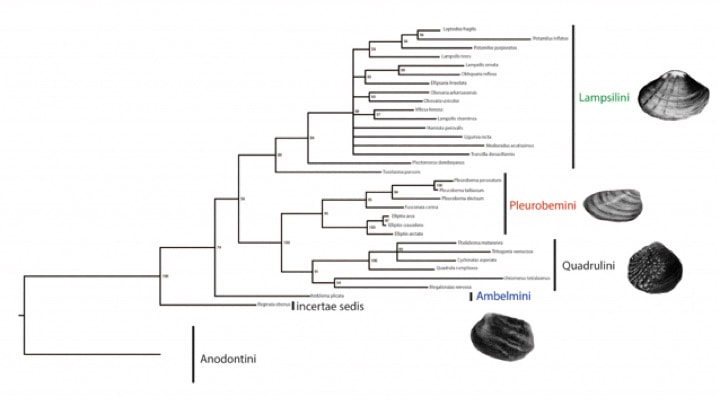Investigating the Dimensions of biodiversity in the mussel holobiont
PhyloGenetic DiversityDo environmental characteristics shape the phylogenetic composition of diversity in animal communities? How does the phylogenetic composition of a host community shape the phylogenetic diversity of the microbiome community? What is the relative importance of environment-specific vs host-specific factors for shaping host-microbiome evolution at different spatial and temporal scales? How do phylogenetic diversities of hosts and microbiomes contribute to functional trait variation and ecosystem level processes?
Freshwater mussels (family Unionidae) in the southeastern US are a highly diverse group of organisms that are relatively poorly understood and undergoing continual taxonomic revision. Our project will first aim to clarify the relationships among all taxa in sampled communities of the Mobile and Tennessee River Basins using a phylogenomics approach. In addition to clarifying taxonomic relationships, this robust phylogeny will allow us to take an evolutionary perspective to testing hypotheses about community assembly and the spatial and temporal scales at which different processes are most relevant. Measures like phylogenetic diversity quantifies the amount of shared evolutionary history among lineages within and between communities, which can be compared with more traditional metrics of diversity to investigate the roles of biotic and abiotic factors in community assembly and differentiaion. By also examining phylogenetic relationships of microbiome taxa within and among individuals, populations, species, and ancestral mussel lineages, we can evaluate factors involved in community assembly at different levels of host-microbiome organization over space, environmental conditions, and evolutionary time. In addition to linking mussel and microbiomes, we will also use the phylogeny to link evolutionary history to ecosytem function by testing for phylogenetic signal in functional traits and relationships between phylogenetic diversity and functional trait diversity. Together these approaches will enable us to test the importance of preserving evolutionary diversity of mussels within and among populations and environments for maintaining ecosystem function, rather than considering species diversity alone. |


